If there is one area of protective gear that is constantly evolving, and generally in a good direction, it is the brain bucket, the skid lid, aka the motorcycle helmet. New materials, new technology and techniques, and new innovations in safety have all helped shape the modern riding helmet, as well as new and more stringent testing and certification methodologies.
The biggest argument, however, is which helmet is best? That is not what we’re really asking in today’s listing, but the counterpoint is that not all riding is the same. What may be the perfect helmet for track riding and racing, may fail woefully in a desert run enduro or a motocross course. And there are those that don’t care for the sport style of riding, preferring comfortable helmets that can be worn for a day-long ride between cities.
Instead, today’s question is which are the best helmets worth wearing, for any given type of riding, in 2021. To qualify, the helmet itself doesn’t have to have been released in 2021, but it should be an update or new version that carries the latest and greatest advancements in safety, technology, materials, comfort, or any combination of all four. We will also be looking at both top-of-the-line and budget options, to provide the best spread of helmets.
With that said, on to the list!
Shoei RF-1400
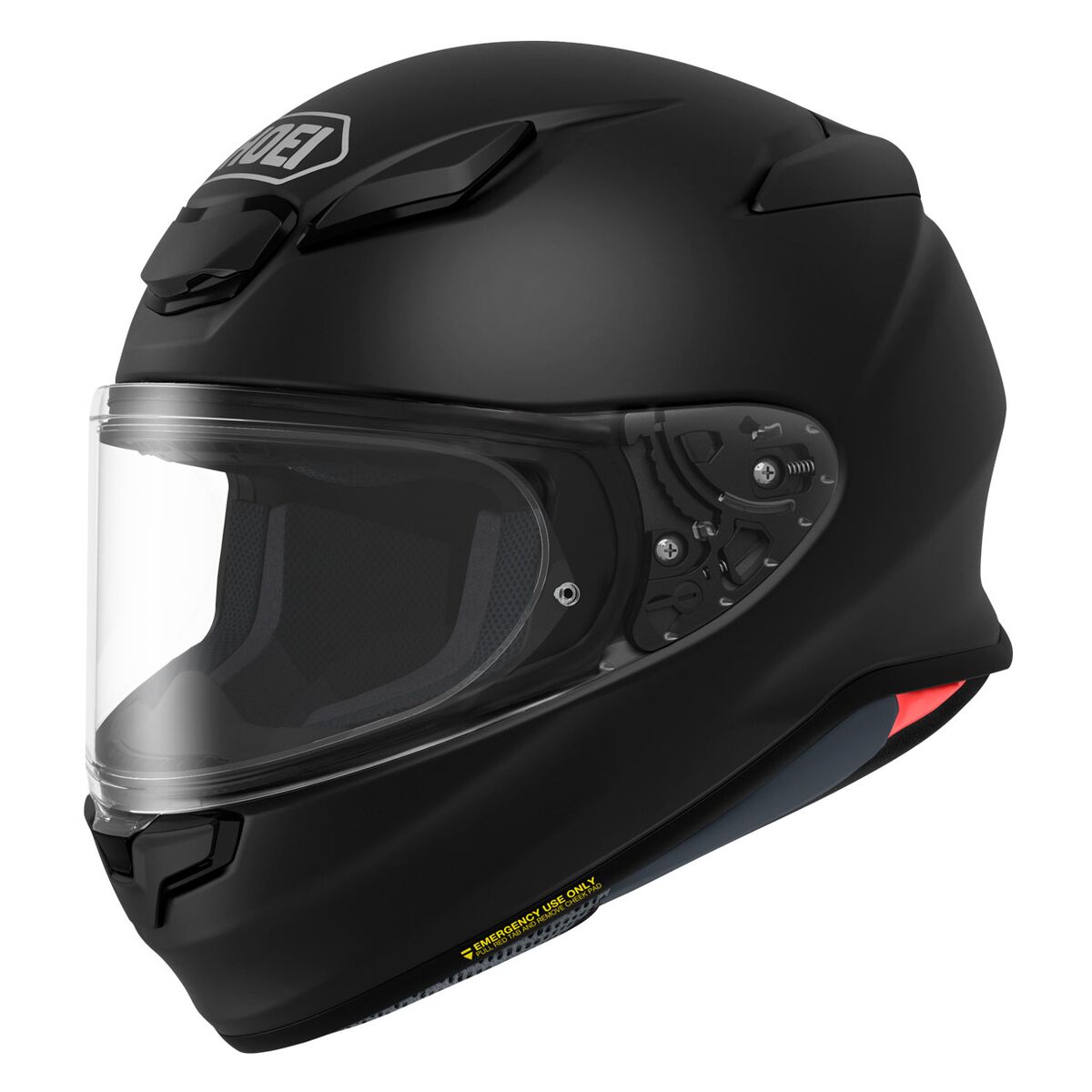
When you think of the best of the best, Shoei is one of the few names that should immediately pop into your head, or more directly, pop onto your head. As the name suggests, the RF-1400 is the long-awaited update from the RF-1200, itself a legendary helmet in terms of construction and rider protection, but with all the necessary upgrades expected from a modern helmet.
The new helmet is improved in a variety of ways, the least of which is a revised aerodynamic shape. This new design offers up to 4% less wind resistance and noise, making an already quiet helmet even quieter. Reworked interior padding addresses one of the few gripes with the RF-1200, that being that it was at times uncomfortably tight to pull on. A redesigned ventilation system also improves upon its predecessor, allowing for optimal airflow.
The shell of the helmet is still made with Shoei’s excellent fiberglass, aramid, and organic fiber weave. It has superb strength and elasticity and has passed both the SNELL M2020 certification and ECE 22.05 certification tests.
Read the review: Shoei RF-1400
ICON Airflight MIPS Stealth
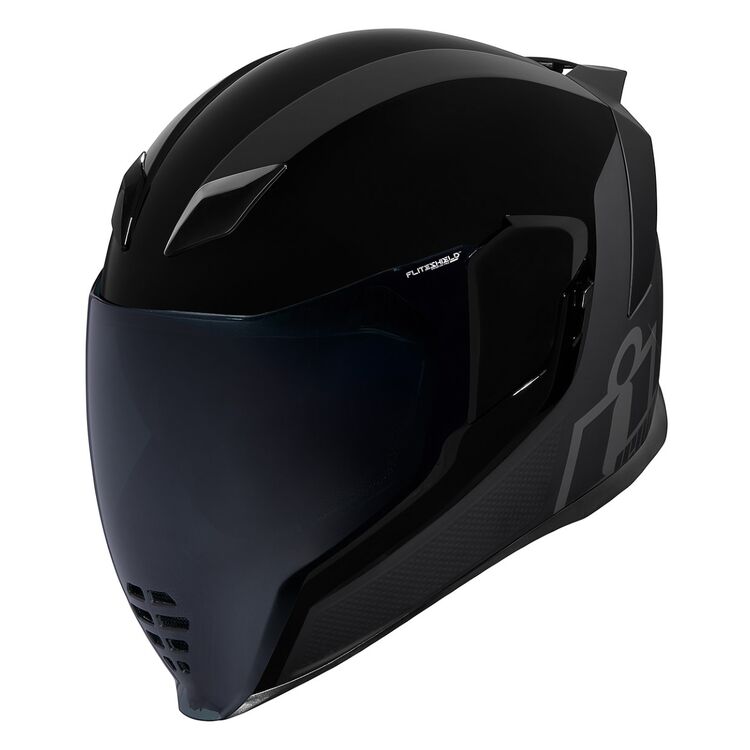
- Price: $320.00
- Buy: Revzilla
- Best of: Budget Full Face
Sometimes when a rider is helmet shopping, they may not have the available finances to afford a $500+ helmet. This doesn’t mean, however, that they should be left with a substandard helmet or one that skips out on important rider protection. Enter, then, the ICON Airflight MIPS Stealth, released in the latter half of 2020.
The most important bit of that name is MIPS or “Multi-Directional Impact Protection System.” This is a special piece inside the construction of the helmet, between the EPS foam and the liner, that allows the helmet to absorb an impact and begin rotating to dissipate energy before the liner starts to move with the shell. It only covers a few millimeters, and the time between shell and liner rotation is measured in milliseconds, but it is enough to allow the brain to slowly accelerate to the speed of the shell, instead of bashing against the inside of your skull during a tumble.
The helmet itself is made of advanced injection molded polycarbonate and is backed by multi-density, multi-layer EPS foam, the MIPS system, and then comfortable, thick padding. Ventilation is through multiple oversized intake ports and a massive chin port and is exhausted via multiple exit ports. The helmet meets or exceeds DOT, ECE 22.05, and other world standards as part of ICON’s push for their “All World Standard.”
Fly Racing Dirt Formula CC Solid
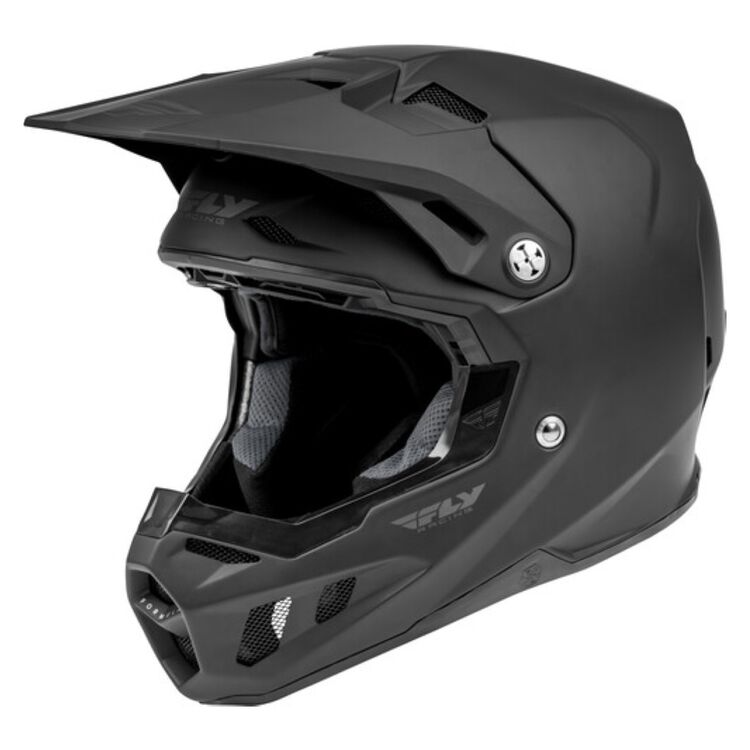
Not everyone who rides does so on the pavement. There are many that prefer to ride trails, kick around in some dirt, or even do long, off-road adventures that often require more protection than what their street-going brethren need. For just such riders, Fly Racing has developed the Dirt Formula CC Solid helmet.
The CC in the name stands for Carbon Composite, which is an interwoven shell of carbon fiber, DuPont Kevlar, and fiberglass, creating a super-strong but elastic shell that also has penetration resistance. This is extremely important when riding in areas where there are branches, sharp rocks, and the like. This is backed by a new style of EPS, known as “Conehead EPS,” which literally uses cones of EPS on the innermost layers to progressively absorb initial impact energy, slowing the head down before it comes in contact with the full multi-layer EPS.
Also helping absorb impact energy, especially low speed falls and drops, is what Fly Racing dubs “Impact Energy Cells,” made of RHEON impact rubber. These cells line the entirety of the inside of the helmet, and are specially shaped and designed to absorb both linear and rotational energy that would not otherwise be absorbed by the shell or EPS during a low-speed crash.
The Dirt Formula CC Solid exceeds all certification tests for DOT and ECE 22.05
You can find out more about this helmet here
Bell MX-9 MIPS
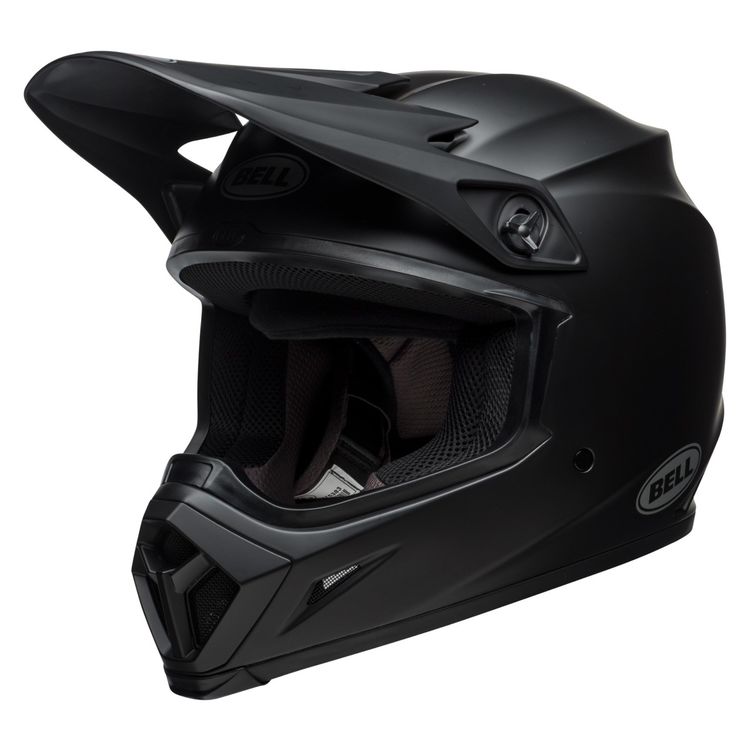
Off-road riding, especially enduro and long adventure trails, can get quite tiring and also requires great visibility to see the branches, roots, rocks, and puddles you need to go through. The Bell MX-9 was famous for being a lightweight, protective, and affordable helmet that addressed all the needs of off-road riders. So it’s reassuring to know that Bell has updated their best off-road helmet with new safety features.
As discussed earlier in this list, MIPS is a safety system designed to mitigate rotational impact energy on the head and brain, and if there is one area of riding that has the highest likelihood of rotational impact, it’s off-roading. Adding it to one of the top-rated off-road helmets of all time only reinforces that this is a helmet that should be on your head.
Made of lightweight polycarbonate, and fully lined (including the chin bar!) with dual-density, multi-layer EPS, the MX-9 MIPS easily passes all DOT and ECE 22.05 testing requirements. In fact, the MX-9 MIPS is one step below Bell’s competition helmet for professional motocross and supercross racers, and the trickle-down of safety advancements to an affordable budget helmet is very nice to see!
Find out more about this helmet here: Bell MX-9 MIPS.
AGV Sportmodular Carbon Solid
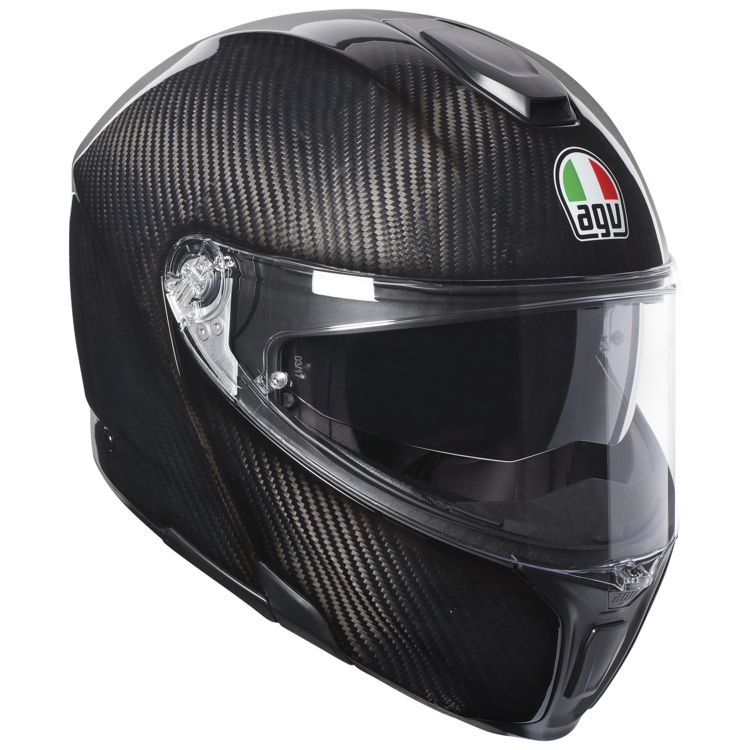
There are some manufacturers that will state that they have the best, latest, and greatest safety innovations in their helmets that turn out to either be gimmicks or adaptations of other manufacturers’ ideas. And then there are those manufacturers that actually develop and design those ideas. AGV is one such manufacturer, and the Italian gear company blew the modular helmet category away in late 2020 with the Sportmodular Carbon Solid.
As the name suggests, this helmet has a 100% carbon fiber shell. The interior design, EPS foam layout, and protection quality were all modeled on the AGV Pista GP-RR MotoGP racing helmet, and as such, the Sportmodular is lined and padded in only the best, highest quality materials. It also sports a full carbon fiber, metal-reinforced chin bar that raises on strong hinges and has a top position lock.
An internal sun-shield in the crown is included, sitting behind a race-grade visor, what AGV calls their GT3 visor with pinlock functionality. Ventilation is multi-channel and multi-intake, allowing the rider to choose where and how they want ventilation. The AGV Sportmodular Carbon Solid is one of the few modular helmets that is rated for use with the chin bar raised and locked, as well as down and locked. It passes all ECE 22.05 and DOT tests without issue.
Read the full review: AGV Sportmodular Carbon Solid.
HJC RPHA 90S
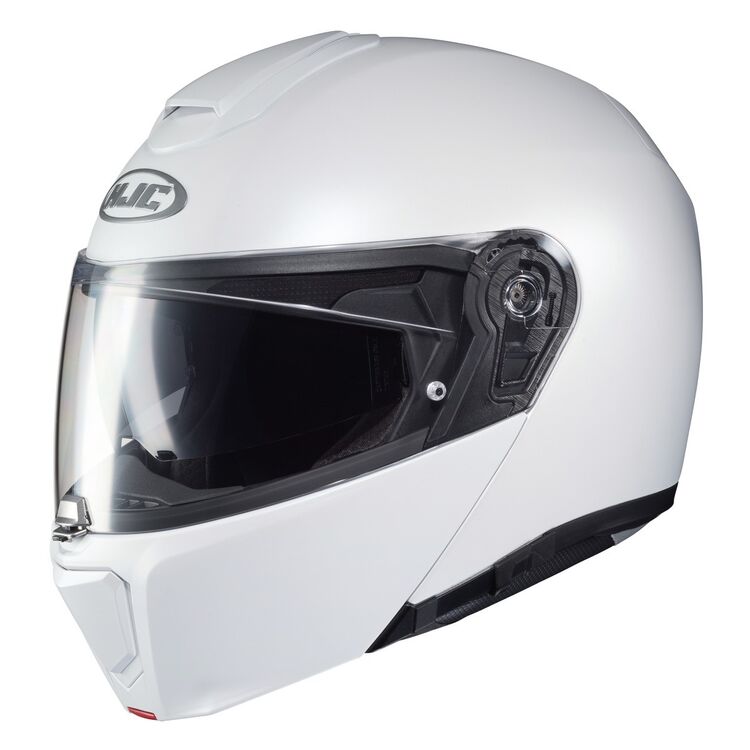
When you pick a modular helmet, you honestly want to make sure you are getting the best protection possible, with the strongest chinbar locking mechanism possible. There are hundreds of helmets that are less expensive than the RPHA 90S that could be listed as budget modular, yet they all have their flaws and issues. This is why our budget pick sneaks in under $500, but it still relatively expensive.
The RPHA 90S is the most recent update of the RPHA 90, a top-rated modular for many years past. HJC, for the 90S, has created a new shell material called PIM Plus (Premium Integrated Matrix Plus), which is made of carbon fiber interwoven with carbon-glass hybrid fabric. This allows for very dependable strength, elasticity, and penetration resistance.
The interior is lined with 3D engineered EPS and is then covered with HJC’s Multi-Cool lined padding. An integrated sun visor comes as standard, and the visor is the same as used on HJC’s racing helmets, model HJ-29, and comes fitted with an anti-fog pinlock insert. The RPHA 90S also received an excellent rating in our own review of it and is for sure a helmet that belongs on your head.
Check out the full review: HJC RPHA 90S.
Arai XD-4
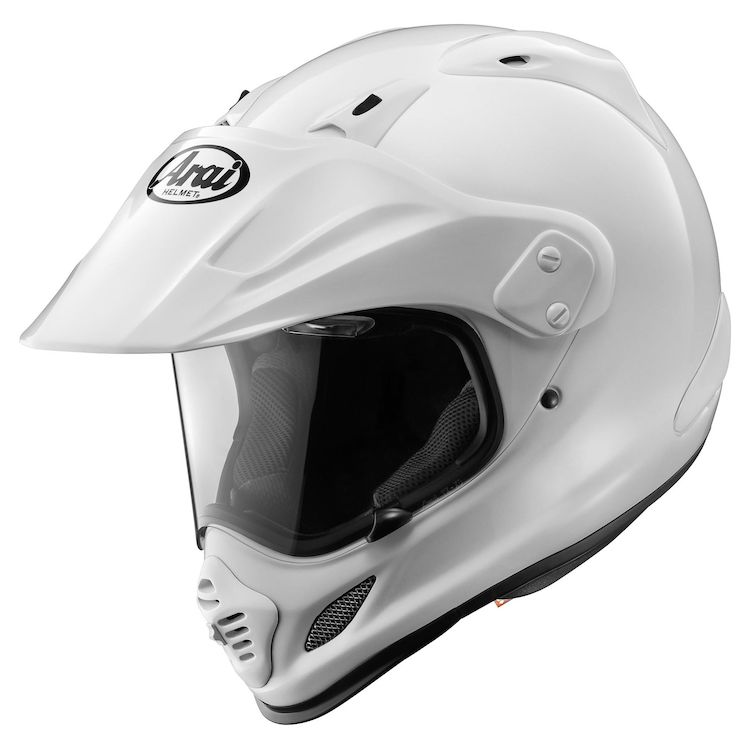
It really doesn’t seem to matter who steps up to the plate to try to dislodge Arai from the top step of the ADV and rally touring ladder, the XD-4 is quite literally here to stay. It has been the top helmet for ADV for multiple years, through multiple variations, and the latest version of the XD-4 is just another example of always evolving and moving in a positive, safer direction.
Made of Arai’s legendarily strong fiberglass weave, the XD-4 is lightweight and extremely resilient to the rigors of ADV touring. Multi-density, multi-layer EPS foam lines the entire interior of the helmet, including the chin bar. The interior padding and liners are customizable, with 5mm peel-away thickness adjustments in the cheeks and temples. The cheek pads are also designed using Arai’s Facial Contour Support (FCS) design, which braces everything from the jaw up to the occipital bones with thick, supportive padding.
The latest update includes a slightly retuned shell shape, to better direct airflow into the vents to cool off the rider. New passive exhausts on the top-rear of the head also help pull heat and moisture out via a multi-step exhaust design, to keep the rider as cool as possible even in the hottest temperatures. The latest version of the Arai XD-4 is one of the few ADV helmets to receive the SNELL M2020 certification and is also one of the few approved helmets listed for the 2022 Dakar Rally.
See how this helmet compares to other models: find out more about the XD-4 here.
Shoei X-14 Solid
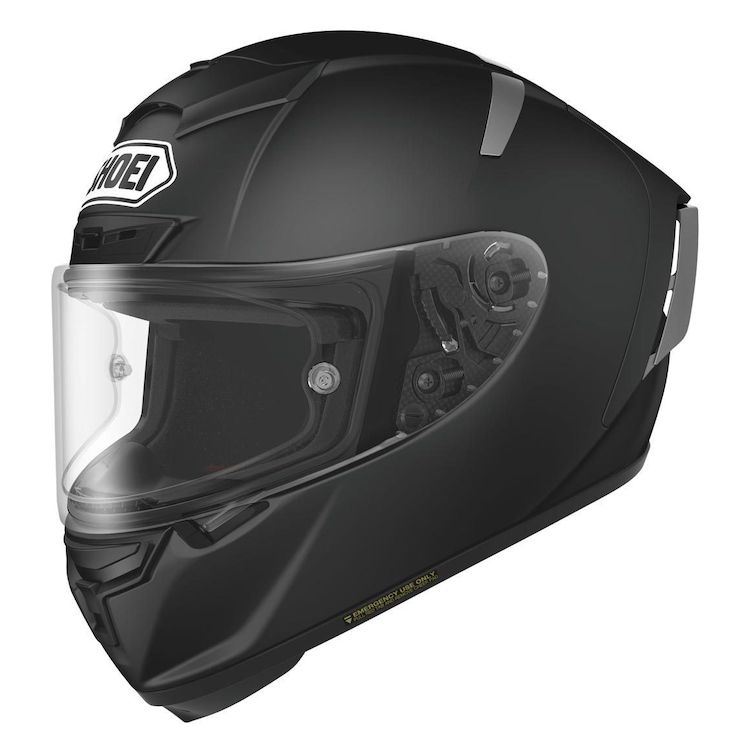
The choice for the best helmet for track days, supersports riding, and powersports racing was a tough decision. However, we have to give Shoei the nod with this updated X-14 helmet. Developed in celebration of Shoei’s long term partnership with racing legend Marc Marquez (one of the greatest riders to throw a leg over a MotoGP bike) the X-14 has received something of much-needed update. This started with a new variation of the Advanced Integrated Matrix (AIM) shell material known as AIM+, which added elastic organic fibers into the weave to enhance lightness, rigidity, flex, and resilience.
That shell is specifically shaped to cut through the air as cleanly as possible, reducing overall drag on a rider’s head. Dual-density, multi-layer EPS foam covers the entirety of the interior, including a reinforced chin bar section. Shoei’s CAD-designed 3D Max-Dry interior system of pads and liners allows for the rider to customize the angle the helmet sits on the head, as well as the thickness of the padding, to ensure the optimal fit that won’t wobble, move, or slip during racing.
Ventilation is through the massive top vent, as well as the crown vents just above the visor. A chin vent is also integrated, which has a special channeling system in the EPS to direct air down the cheek pads and exhaust out the bottom rear of the helmet. Exhausts are all positioned either directly before or after the three spoilers on the rear of the helmet, which gives added stability to the helmet when cornering hard, with the head ducked down near the clip-ons.
The latest Shoei X-14 update passes the SNELL M2020 certification test, as well as achieves the rarest certification, that of FIM Homologation, the most stringent testing currently available.
Read the review of an older model: Shoei X-14.
Scorpion EXO-R1 Air
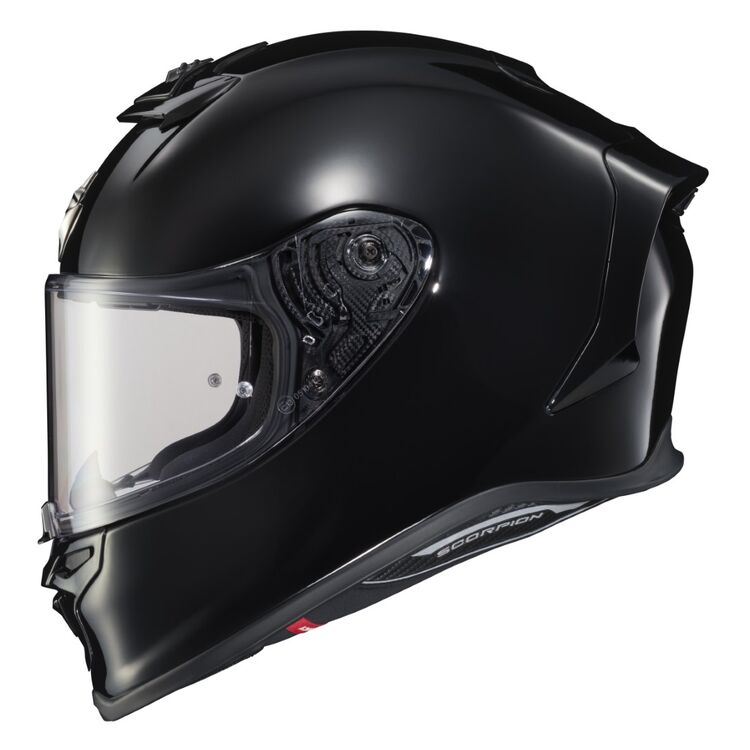
If the price of the Shoei X-14 makes you wince and sends your wallet screaming for the hills, then rest assured that there is a budget track day helmet for you. Scorpion, the company that always seems to find the best price-to-performance balance for their gear, has a very highly reviewed and rated helmet for you in the EXO-R1 Air.
Using what they term as Ultra-TCT, the shell is made up of interwoven fiberglass, aramid, and poly-resin fibers. This is lined with multi-density, multi-layer EPS, with channels cut into it specifically for maximum ventilation and cooling. This ventilation comes in the form of a ram-air top vent and a standard chin vent. Four exhaust ports behind the rear spoiler quite literally suck the heated air out of the helmet using the venturi effect.
The padding and liner inside the helmet uses Scorpions AirFit system and KwikWik cloth. The AirFit system allows the rider to inflate small bladders in the cheek pads, which contour to the face to keep the helmet in place at speed. KwikWik is a very absorbent lining fabric that is akin to a shammy, and soaks up sweat at an astounding rate, to either be evaporated out via the exhausts or, with the removable liners, washed and cleaned by hand.
The Scorpion EXO-R1 Air achieves DOT, ECE 22.05, SNELL M2020, and FIM Homologation certifications (FIM only for the small shell size).
Read the review: Scorpion EXO-R1 Air.
Source: MotorbikeWriter.com

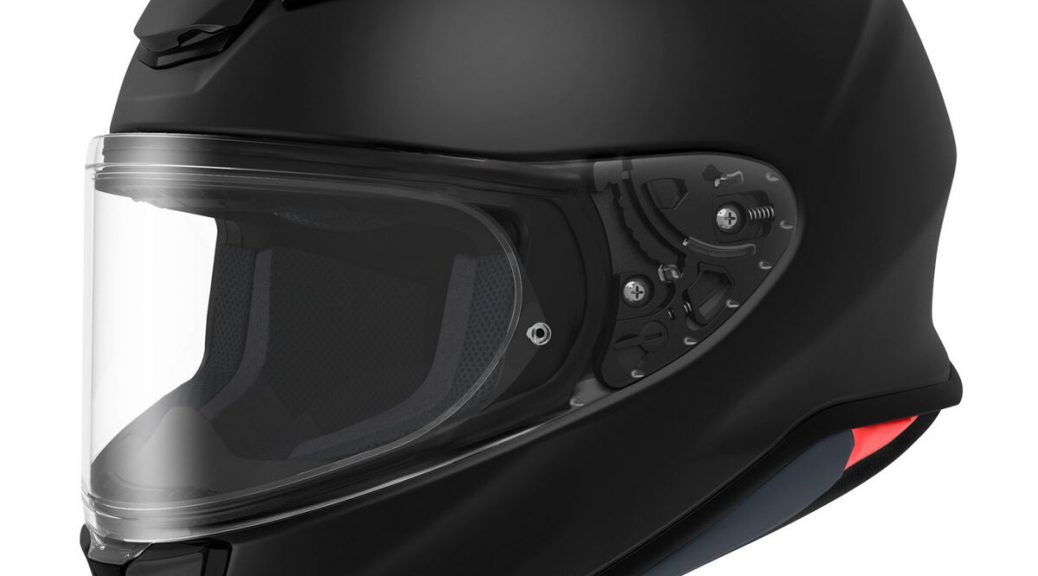
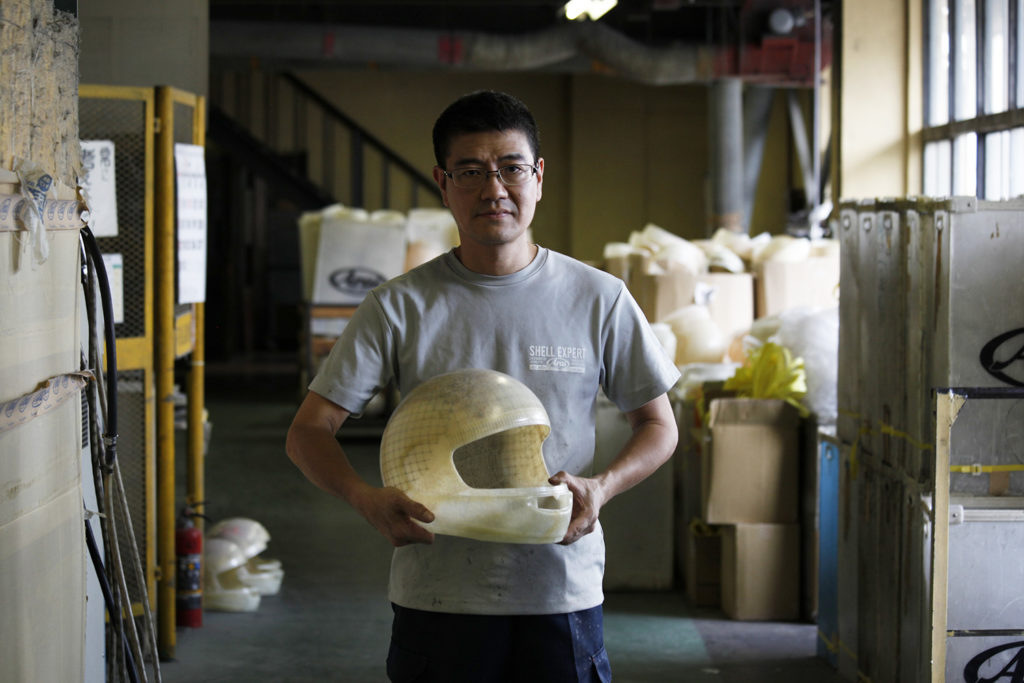
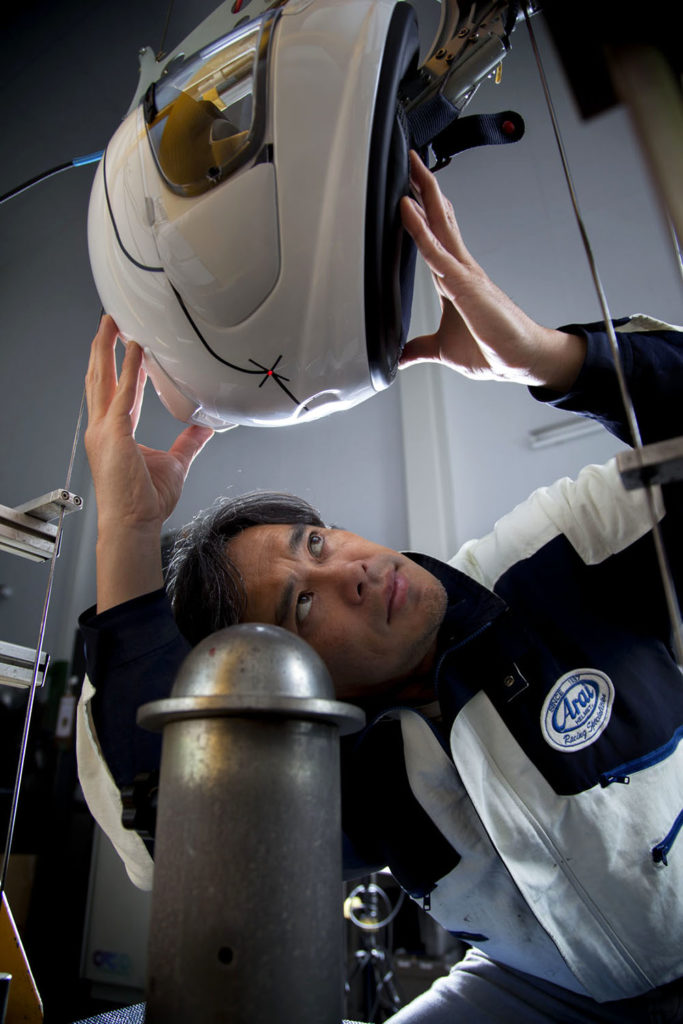
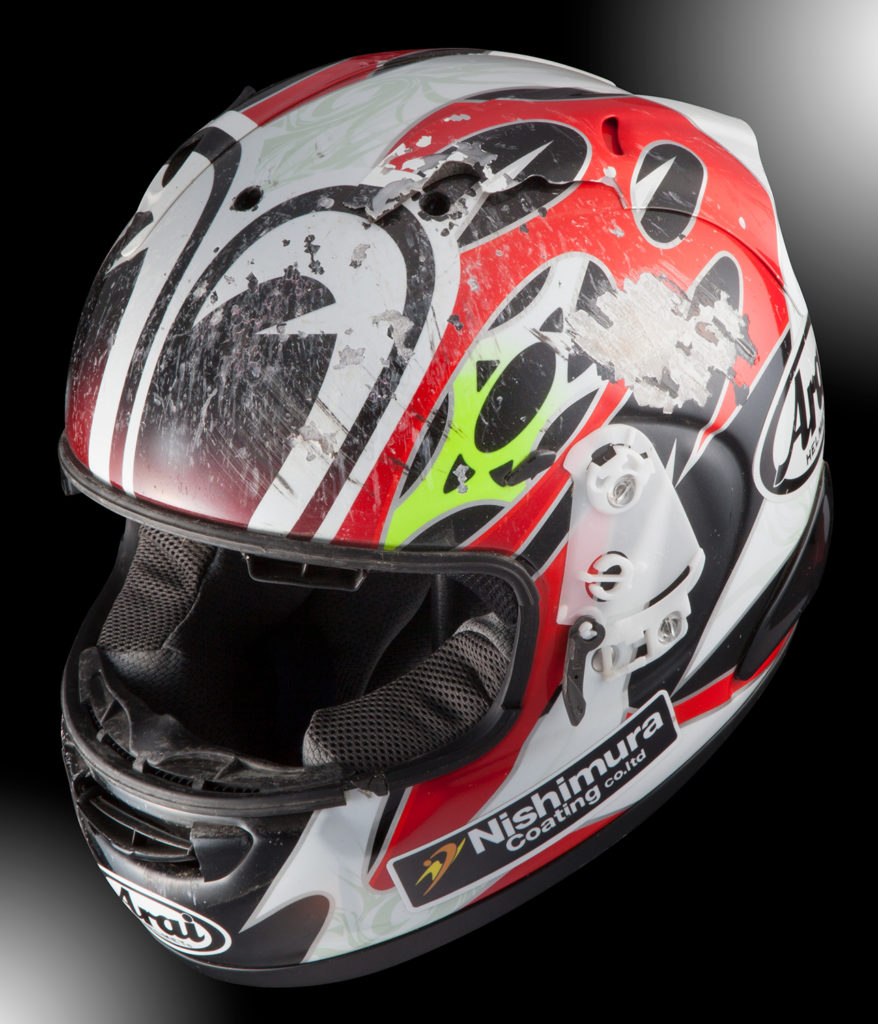
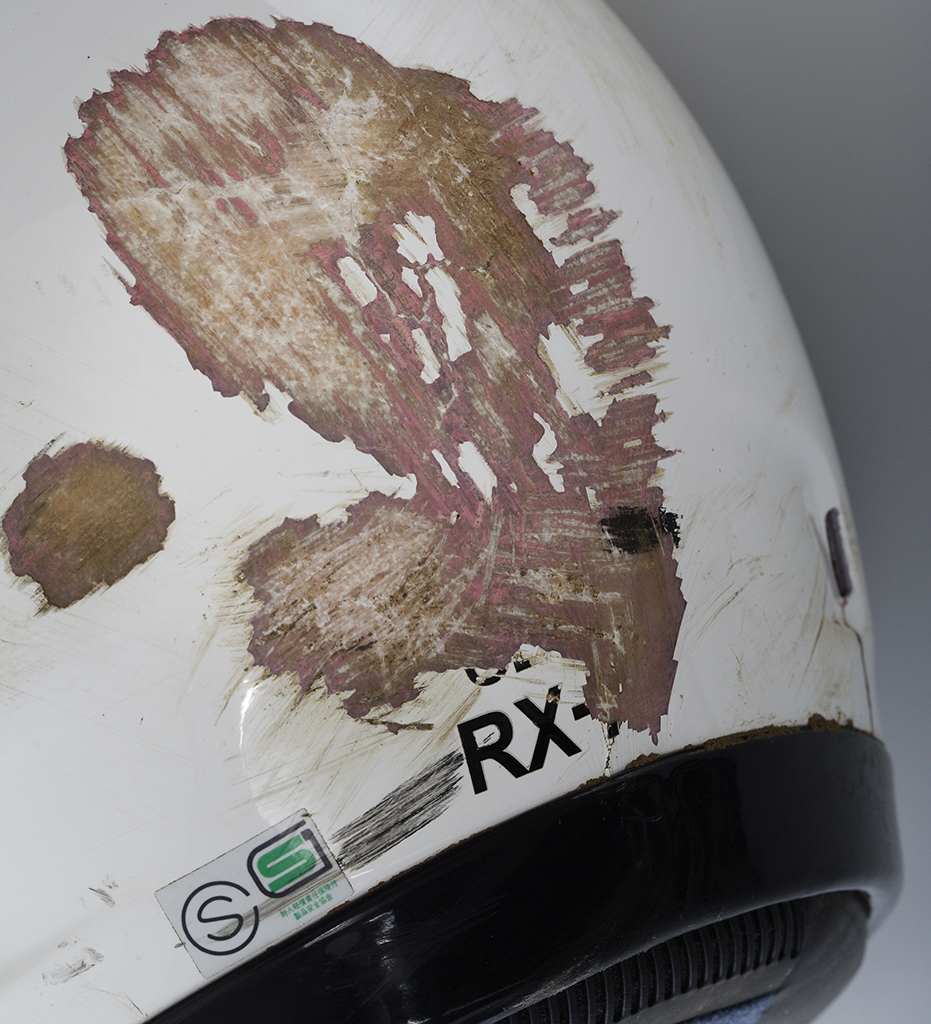
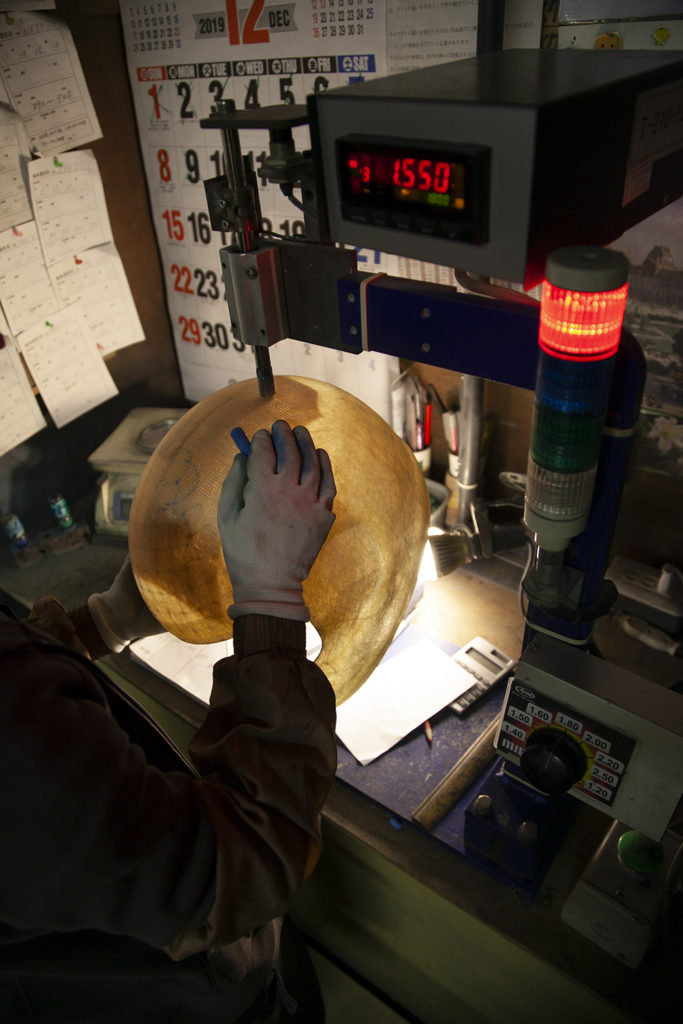
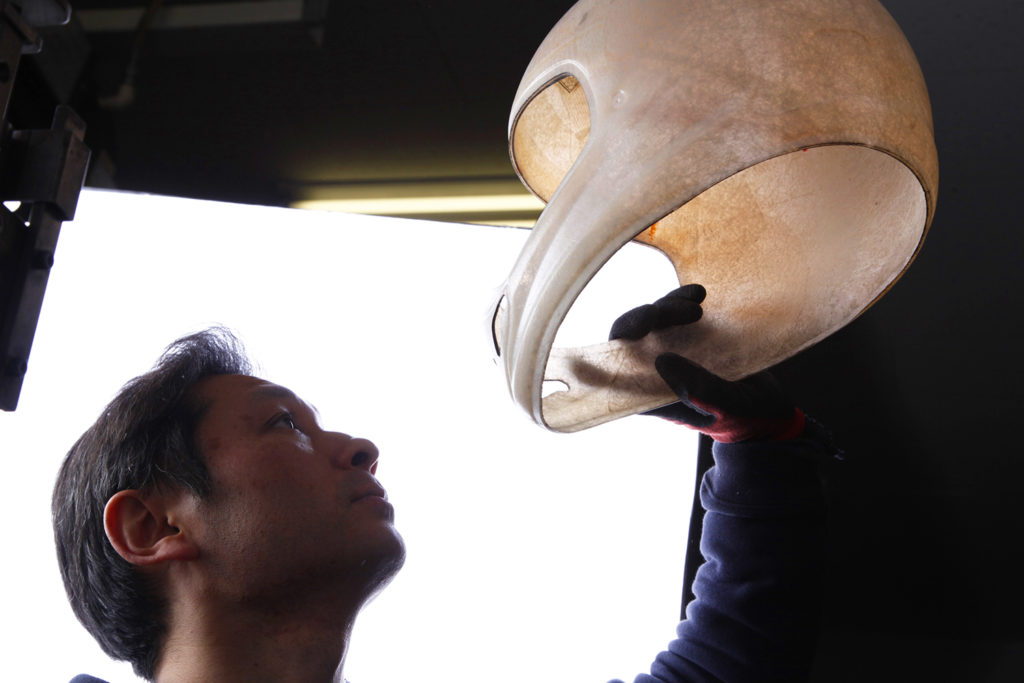






 Shoei RF-SR helmet
Shoei RF-SR helmet




















